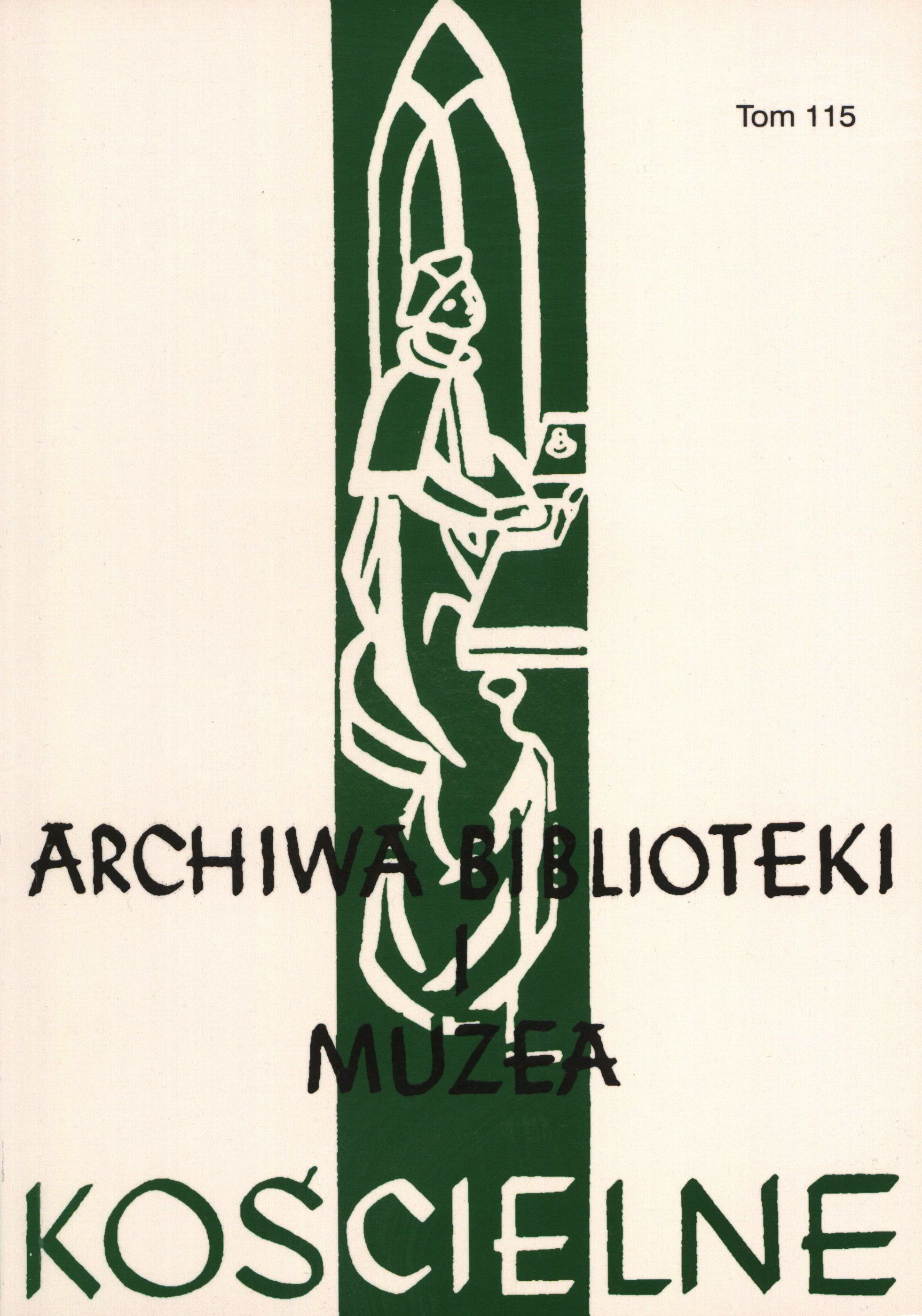Prepozytura kielecka w XVI stuleciu. Wierni i ich duszpasterze
The Provostry of Kielce in the Sixteenth Century: The Faithful and the Clergy
Author(s): Waldemar KowalskiSubject(s): History
Published by: Katolicki Uniwersytet Lubelski Jana Pawła II - Wydział Teologii
Keywords: Cracow diocese; Church reform; cure of souls; libraries; testaments; Church discipline
Summary/Abstract: The article discusses the cure of souls in the Kielce Provostry in the sixteenth century. The source-base comprises the 1529 benefice taxation register of the Cracow Diocese, the records of the local consistory court, the Kielce collegiate parish registers, which date back to the 1560s, and the 1590s visitation protocols. There were twenty-nine parishes in the territory under the provost of the Kielce collegiate chapter. It was predominantly a rural area with only seven towns, whose economic and administrational roles were limited to the demesnes in which they were located. With a few exceptions, the local landowners were ecclesiastical institutions, first and foremost the Bishop of Cracow, the Benedictine monastery of the Holy Cross and the Cistercian monastery at Wąchock. Thus Reformation ideas did not spread in the Provostry, in contrast to neighbouring lands, where noble patronage played a key role. The parish benefices in the Provostry of Kielce were among the best endowed in the whole diocese. The majority of pastors employed curates, usually one, though occasionally two. The number of parishes with curates fell from 79 to 62 percent between the 1520s and the 1590s. In 1529, 44 percent of curates enjoyed higher incomes than the Provostry average, but in 1597 parish priests with above-average incomes constituted only 27 percent. There is no straight correlation between the level of parish incomes and the decision to employ a curate. Although the salaries of the lower clergy were usually only around 15 percent of the overall annual parish revenues, there was no move to raise them. Salaries were supplemented with fees for administering sacraments, but all we know about them is that they were on the decrease througho ut the century. The salaries of the Kielce lower chapter that substituted for non-resident canons and prelates constituted only 16 per cent of its total annual income. The curates’ testaments confirm the impression that generally, if their lives were far from luxurious, they were certainly not poor. The majority of rectors and curates in the Provostry were born to burgher or peasant families of the Cracow diocese, and those of noble birth constituted at most 20 percent. The lowest reaches of Polish society completed elementary education at most, hence mass literacy was uncommon. As no more than 15 percent of the Provostry clergy enrolled at Cracow University, training under the guidance of the local parish priest was the only route to ordination for most of them. The lower clergy were aware of the importance of books for the cure of souls, and a breviary, not necessarily the Roman Breviary, was commonly relied upon. Pre-Tridentine liturgical manuals were in use in some parishes down to the end of the sixteenth century. Rarely did visitations list sermon collections, which suggests that the priests must have relied on homilies published as part of diocesan guides (agendæ). Parish and private libraries were usually small, mostly containing only liturgical manuals and books useful on an everyday basis; catechisms are rarely mentioned. There is no straight correlation between the variety of books in the parish library and the quality of the cure of souls, as is demonstrated by the case of the Kielce collegiate parish. From the 1560s through to the end of the century the six to eight local chapter vicars exercised care only over a minority of local parishioners, perhaps some 5,500. In 1597–98, religious brotherhoods were active only in around 20 percent of parishes, and efforts to expand their activities were frequently in vain. It was clearly difficult to engage parishioners beyond Sunday mass attendance, and to do more than persuade them to memorise the rudiments of the faith and contribute to bringing offertories. In the second half of the sixteenth century, religious life in the Kielce Provostry was still to a considerable extent a continuation of the mediaeval world, in which the programme of reform was limited to the strengthening of Church discipline.
Journal: Archiwa, Biblioteki i Muzea Kościelne
- Issue Year: 2021
- Issue No: 115
- Page Range: 197-251
- Page Count: 54
- Language: Polish

